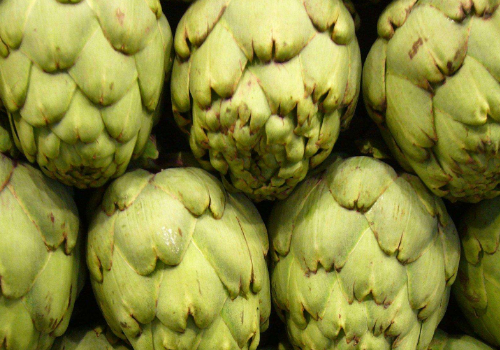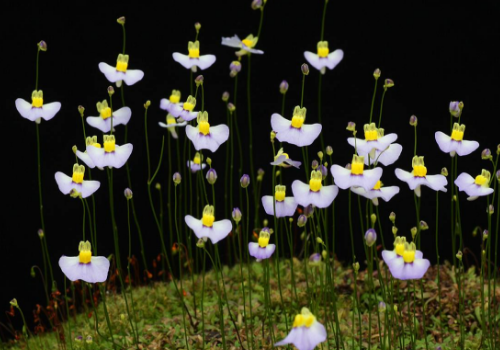How to grow artichoke? can I use a flowerpot?
Artichokes, this is a vegetable, is known to many people, is more attractive eyes, but the price is a setback, so how to grow artichokes? Can I use a flowerpot:
How to grow artichokes:
1. Sowing time: from September to October in autumn, the climate is more suitable for seed germination and planting. And avoid sun exposure, it is best to sprout the seeds in the seedling box before planting, this method can ensure the germination rate of artichoke.
2. Planting seedlings: the distance between Korean thistle seedlings should not be less than 1 meter, and do not irrigate too much water during the seedling growth period. The soil can be moist.
3. Fertilization: when the seedlings grow to 15 centimeters, it is necessary to start fertilizing. Using organic compound fertilizer and supplementing nutrition can make artichokes grow bigger and yield higher.
4. Insect pests: Korean thistles grow aphids and use anti-aphid drugs with light residual drugs.
5. Harvest: the harvest of artichoke must be completed in 15 days. If the flowers bloom for too long, they will grow old, affect the price and affect the taste.

Can artichokes be planted in flowerpots:
Artichoke has a high demand for nutrition and is not suitable for pot culture.
If you want to consider planting in a flowerpot, you should choose a larger flowerpot and a fertile soil. This method of planting artichokes should not be expected to grow much fruit. It is good to grow well.
You can also go to the florist to buy artichokes and put them in a vase with water so that artichokes can survive in the vase for a week.
This is the end of the introduction on the planting method of artichoke, this is still not recommended to grow in flowerpots, if it is ornamental, you can still consider planting.
Detailed explanation of planting techniques of artichoke
Artichoke, also known as vegetable thistle, is evolved from vegetable thistle. Some people call it French lily and lotus lily. Artichoke is produced along the Mediterranean coast, and France has the largest number of artichokes cultivated in the world. Artichoke in China was introduced from France and was first planted in Shanghai. It is now cultivated in Shanghai, Zhejiang, Yunnan, Taiwan and other regions. The cultivation area of Taiwan Province is larger. Artichokes are generally used to make cans for sale. So what are the cultivation techniques of artichoke? The editor will give you a detailed introduction right away.
Cultivation techniques
Seed propagation
In the south, the seeds were sown in September, the height of the seedlings was more than 10 cm in October, and 4-6 true leaves were transplanted into the field. In the Yangtze River basin and the area to the north, seedlings are raised in protected areas in winter and spring, planted in the field from April to May, and harvested in the spring of the following year. If black film shading treatment is adopted in the seedling stage, bolting and budding can be harvested in early autumn of the same year.
The seed skin of artichoke is thick and hard, so it is appropriate to soak seeds and accelerate germination before sowing. The method is to soak the seeds in 55 ℃ warm water, stir them continuously, soak them for 12 hours after soaking at room temperature, rinse them with clean water, wrap them with a wet cloth and put them in 20 ℃ conditions to promote germination to dew. You can use 72 hole plates or 6 cm square nutritious earthwork to raise seedlings, put an exposed seed in each earthwork or hole, and cover the seeds with fine sand or vermiculite. The seedling bed temperature was kept at about 25 ℃. When the external temperature was stable at 17 ℃, the seedlings had 5-7 true leaves, which were planted in the field with soil. When the seedlings have 3 or 5 true leaves, they can be covered with black film.
Planting method
According to the soil fertility, apply basic fertilizer: planting density, make a single row of border with a width of 1.5m, plant 6000 plants per hectare. Plant and pour water at the same time. The planting plants were ploughed twice continuously after planting, in order to increase the soil temperature and promote the slow seedling and root development. those raised with seeds were topdressing compound fertilizer once when the plant height was about centimeters, using compound fertilizer 300-450 kg per hectare. At the beginning of budding, applying human feces and urine can promote the growth of buds. During the flower-picking period, urea is applied every 15-20 days, with 300 kg per hectare, and each topdressing should be watered. Prevent drought during flowering and stem stage. Attention should be paid to drainage and waterlogging in the rainy season.
Prevention of diseases and insect pests
Small land tiger: warm areas are often issued in April, to make a good forecast, before the third instar larvae, use 90% trichlorfon 800-1000 times liquid or other effective agents in the rainless night spray.
Aphids: they occur all year round. When they are first discovered, they are sprayed with dimethoate, aldicarb, etc., and sprayed 3 times before budding.
Root rot occurred in the year of Rain Water. The main symptoms were root rot and blackening, and then plant wilting and lodging. Soil control is to cut off the rotten roots with a knife, smear it with agricultural streptomycin sulfate, and then use it to loosen the soil and plug it on the section.
Timely harvest
It is generally harvested 10-15 days after budding, and the first bract-picking should be 2-3 days in advance to promote the growth of secondary buds.
Artichoke should also pay attention to the protection of overwintering when planting. In warmer areas, you can live in the open field in winter. But overwintering in the north requires some protective measures. Artichoke is very nutritious and tastes sweet and fresh. Eating more food in the elderly can lower cholesterol. In addition to being used as food, artichokes can also be used as medicine to enhance the function of the liver, treat chronic hepatitis, as well as diuresis, detumescence and digestion. The economic value is high.
New planting techniques of artichoke
Artichoke, alias chrysanthemum thistle, vegetable thistle, French lily, lotus lily perennial herb. Native to the Mediterranean coast, it is produced by vegetable thistle (C.cardunculus L.) Evolved. It is most cultivated in France. It was introduced into Shanghai from France in the 19th century. China mainly has a small amount of cultivation in Shanghai, Zhejiang, Hunan, Yunnan and other places. The consumption and import of artichokes in developed countries such as the United States and Western Europe are increasing (Artichoke in supermarkets). Canned products are in short supply in the international market. in order to meet the needs of the international market, Taiwan Province of China has a large area of planting and products for export to earn foreign exchange. Artichoke feeds on flower buds, and the petiole can be cooked after softening cultivation.
Artichoke is a cultivated variety which feeds on flower buds in the genus of Compositae. It is resistant to light frost and is suitable for planting at an altitude of 1700m to 2100m.
I. selection of sites
It is suitable for planting in fields with convenient transportation, sunny, sufficient light, surrounding meta-environmental pollution sources and convenient drainage and irrigation. Loam or straw loam with medium and high soil fertility, loose soil and strong water holding capacity should be selected.
II. Land preparation
Deep ploughing the land, removing weeds, stones, etc., leveling the land. Lift the ditch, ridging in the direction of the water and the wind, with a height of 25 cm to 30 cm. The profile of Pulang is trapezoidal and the wall is full.
III. Fertilization
Apply sufficient base fertilizer, more than 2 tons of rotten farm manure per mu, spread farm manure flat; chemical fertilizer is mainly nitrogen compound fertilizer, applying 40 kg per mu. The middle layer of fertilizer is applied.
IV. Transplanting
The transplanting period is in the middle and late October of autumn. The row spacing is 1.2 to 1.3 meters, the plant spacing is 70 to 80 centimeters, and the density is 700 to 800 plants per mu. Cover it with plastic film after planting.
5. Fertilizer and water management
Scratch the root water after planting and keep the soil moist and straight after survival. When irrigating, the water surface should not exceed Pumian, quick irrigation and rapid drainage. It is necessary to dredge ditches and drainage in the rainy season, and drip irrigation or sprinkler irrigation can be used if conditions permit. Topdressing is mainly based on nitrogen fertilizer and manure, and hole application is suitable. Seedling fertilizer should be applied frequently, moss bud fertilizer should be re-applied, and foliar fertilizer should be applied timely.
VI. Common diseases and insect pests
The main diseases are blight, root rot and so on, and the main pests are underground pests and wild insects.
- Prev

The difference between German Iris and Iris after several years of planting
German iris, this is also a kind of plant, the growth is really good-looking, the flowers are blue, then how many years of German iris has been in bloom? The difference between German irises and irises: German irises bloom for a few years: German irises usually blossom in the second year. Blossom in April and May
- Next

How does raccoon algae eat insects in the water? how can it blossom?
Raccoon algae also need to prey on insects like pitcher plants, so how do raccoons eat insects in the water? How to blossom: how does beaver algae eat worms in the water: raccoon algae is a plant that lives in water, and it eats worms in the water no less than pitcher plants. The life span of raccoon algae is not long, it is an annual aquatic plant.
Related
- Fuxing push coffee new agricultural production and marketing class: lack of small-scale processing plants
- Jujube rice field leisure farm deep ploughing Yilan for five years to create a space for organic food and play
- Nongyu Farm-A trial of organic papaya for brave women with advanced technology
- Four points for attention in the prevention and control of diseases and insect pests of edible fungi
- How to add nutrient solution to Edible Fungi
- Is there any good way to control edible fungus mites?
- Open Inoculation Technology of Edible Fungi
- Is there any clever way to use fertilizer for edible fungus in winter?
- What agents are used to kill the pathogens of edible fungi in the mushroom shed?
- Rapid drying of Edible Fungi

